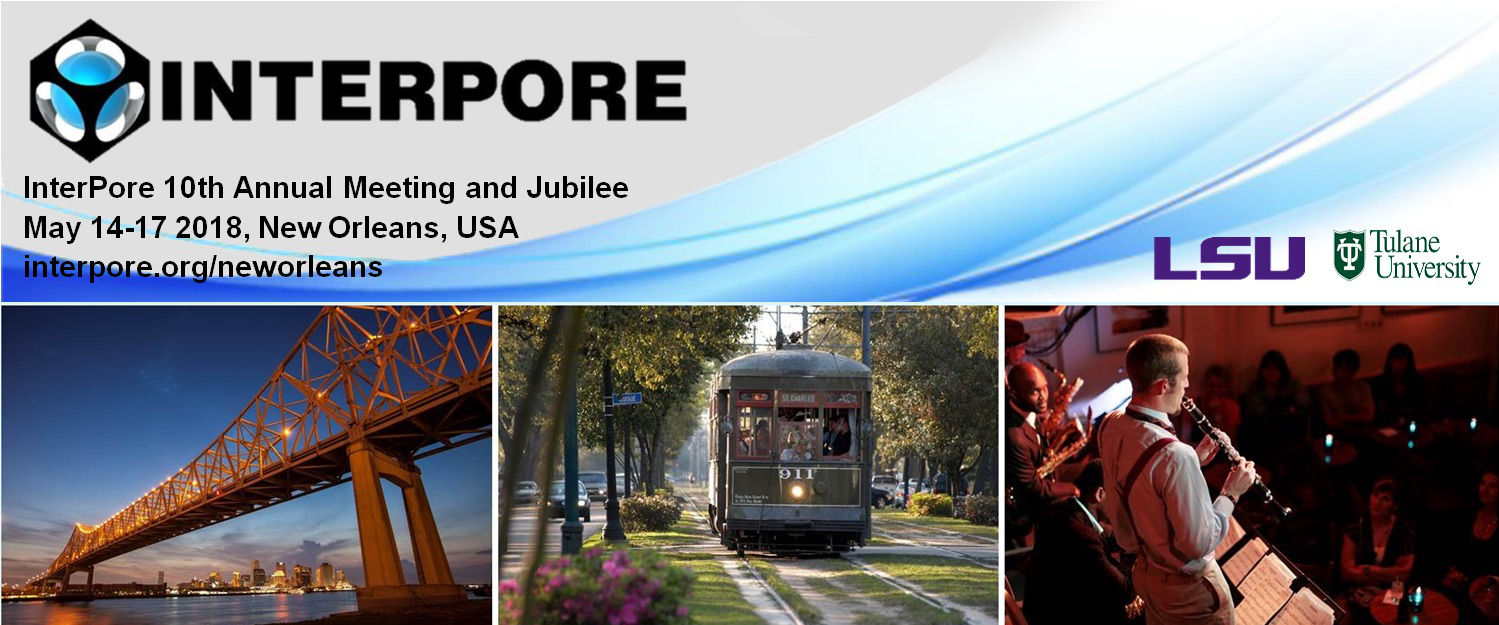Speaker
Description
We quantify interactions between resident and infiltrating water coupled with tracer transport during water-air, drainage-imbibition cycles. Using a 2D Lattice Boltzmann method (LBM), we investigate immiscible-miscible and tracer transport processes in an heterogeneous pore structure with various boundary conditions. The simulations clearly show three types of interactions between resident and infiltrating water: (1) flushing of resident water; (2) mixing between resident and infiltrating water; and (3) bypassing of resident water. Some of the (initial) resident water, containing tracer, remains in the pore space, especially larger pores, even after two drainage-imbibition cycles. We analyzed the sensitivity of these three types of interactions to flux on the boundary, contact angle, body force and porosity. The results on ‘old’ and ‘new’ water saturation, pockets number and the tracer concentration in the outflow demonstrate that the boundary flux and the porosity are critical factors affecting these interactions. Thus, the initial saturation and distribution of resident water are not the only factors affecting interactions between resident and infiltrating water. Although it is difficult to directly link such pore-scale simulations to macroscales, the results show a certain correlation to field-scale phenomena: similar to field measurements, we find that infiltrating water represents the majority of water reaching the domain outlet at short times with higher input flux, while a mixture of resident and infiltrating water then elutes over longer times with lower input flux. Our simulations also show intrinsically how resident water can remain in the domain over long times (months and even years), as found at the field scale, and demonstrate that LBM is capable of simulating transport phenomena in partially saturated porous media.
| Acceptance of Terms and Conditions | Click here to agree |
|---|


